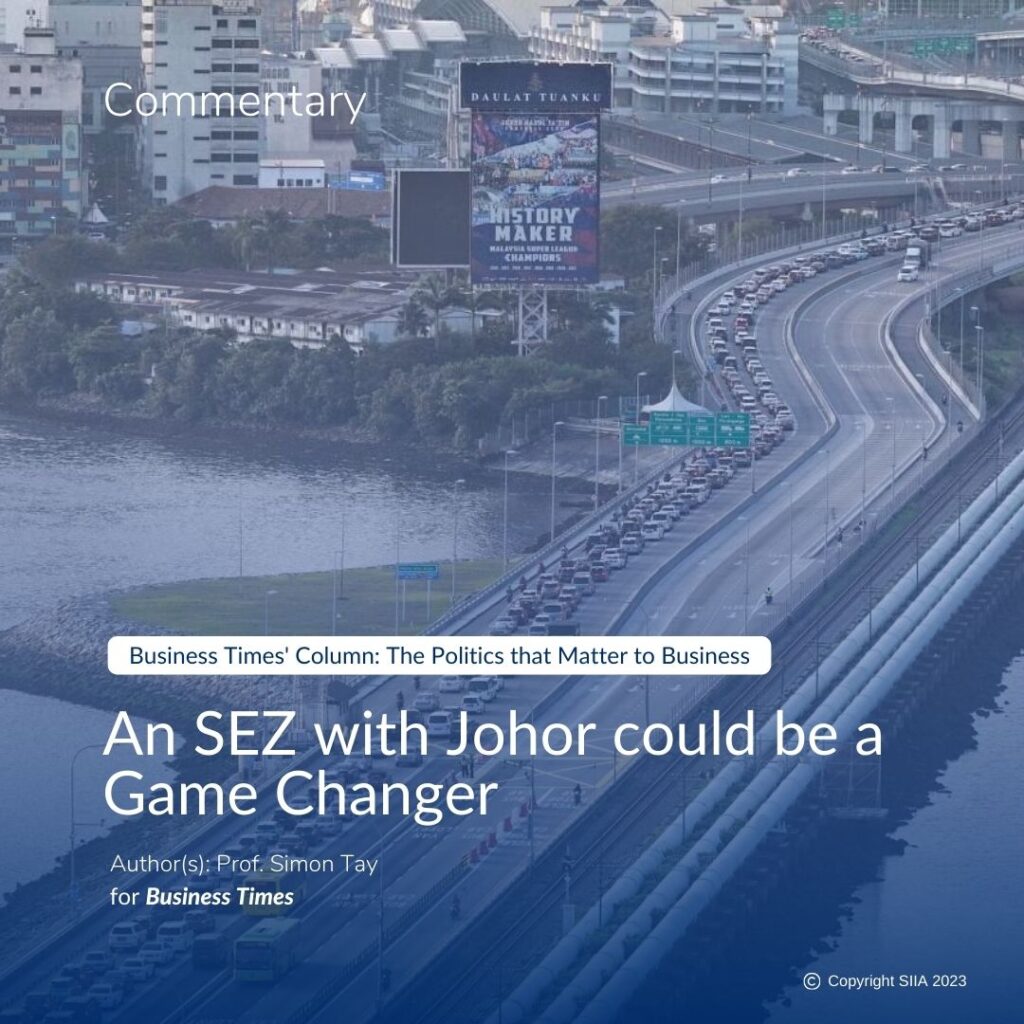As Singapore gears up for its 50th anniversary of independence next year, the country and its people are looking with anticipation to its leaders for the key directions and focus that will shape its future in the next five decades and beyond.
Indeed, much global attention will also be focused on the country as it maps out its future amid new challenges from both within and outside its borders. Prime Minister Lee Hsien Loong touched on some of these at the recent National Day Rally.
It was his last before next year’s 50th jubilee and in his speech, Mr Lee highlighted elements of the “new way forward” for the country.
More details about the future path of Singapore will emerge in the months ahead. But Mr Lee dropped a few hints as he spoke about a number of issues close to the hearts of Singaporeans, including changes to the Central Provident Fund, plans to improve the delivery of municipal services and the need to continue using education as a key pathway to enable people from all backgrounds to succeed in life. These issues affect many Singaporeans, but at the same time, there is a growing search for a new or modified paradigm for both domestic and international affairs.
We believe that there will not be only one way forward, but rather several. Singapore’s future resilience rests on a range of social, economic and foreign policy measures currently under way, many of which are going in the right direction.
However, more needs to be done.
A WORLD IN FLUX
Singapore has come a long way in a relatively short period of time and much has been written about the country’s achievements in the face of adversity. But changes in its society and among its people have brought about new challenges domestically.
At the same time, a shifting global landscape means that the city-state has had to anticipate a disruptive security and economic environment and respond quickly. The world is, indeed, in a state of flux, with conflicts raging from Ukraine to Syria and Iraq, and sporadic escalations between China and Japan and in the South China Sea over the Spratly and Paracel Islands.
While tensions have not yet boiled over, Singapore has clearly been affected: Its industrial parks in Vietnam were ransacked during the anti-China protests several months ago.
This is a reminder that Singapore cannot be idle in the face of Asia’s relative diplomatic immaturity. It must actively propose solutions.
Convening the littoral states’ national oil companies to establish a joint venture for exploration, extraction and profit sharing from South China Sea oil and gas reserves would represent a diplomatic innovation for Singapore.
Singapore can also move more quickly to take advantage of new economic momentum. The recently installed leaders in Indonesia and India have signalled their growing openness to investment, in particular to bridge massive infrastructure gaps.
For instance, Indian Prime Minister Narendra Modi’s plan to build 100 new cities makes it an important market with which Singapore should consider ramping up joint ventures and other partnerships.
TAKING DECISIVE ACTION
Singapore should also consider taking decisive action on regional trade and investment agreements.
For example, while the ASEAN Free Trade Area has come into effect, it is clear that most Association of South-east Asian Nations (ASEAN) countries still require significant technical assistance to fully leverage their markets. Also, the much further-reaching ASEAN Economic Community is still due to be established by the end of next year and the related Regional Comprehensive Economic Partnership, which will link ASEAN with other Asia-Pacific countries, continues to be negotiated. Both milestones will be essential for regional economic integration and momentum.
Singapore cannot simply wait for these markets to become more open; it has to support its ASEAN partners bilaterally, while helping regional negotiators develop the mechanisms to build capacity. Ultimately, this will create more opportunities for Singaporean businesses to expand.
Singapore’s plans to drive its global competitiveness begin at home, with a new series of master plans that lay out a vision for a less congested and more devolved and dispersed set of industrial clusters from Jurong to Seletar. Each of these is focused on capturing the higher-value segments of supply chains, such as advanced materials recycling and clean-energy technologies.
Mr Lee also emphasised that this physical and economic master plan must be backed by an educational one, as strongly recommended by the Applied Study in Polytechnics and ITE Review (ASPIRE) steering committee. The committee advocated more Swiss-style partnerships between Singaporean companies and polytechnics, and a continuous focus on upskilling to improve worker productivity. Over time, more Singaporeans should be given opportunities to gain hands-on experience early on through internships with industry stakeholders. At some point, perhaps they could be granted the opportunity to spend portions of their National Service time in corporate environments at home and abroad.
Building strong national capacity at home and diversifying partnerships abroad will be the crucial pillars of Singapore’s resilience in a turbulent world. As Singapore prepares to celebrate turning 50 next year, much attention will be focused on the plans and directions the Government announces to ensure all the good work done in the first half-century persists into the future.
This will require the country’s leaders to look both within and outside its borders in order to align all its policies to achieve sustainable progress now and in the future.
ABOUT THE AUTHORS:
Parag Khanna and Nicholas Fang are senior research fellow and executive director of the Singapore Institute of International Affairs (SIIA), respectively. Together, they co-direct the SIIA’s Future 50 (F50) programme, which aims to map out ‘The 50 Year Future for Singapore in Asia and the World’ through a series of discussion-based forums and events. F50 is intended to run for two years, leading up to Singapore’s 50th National Day next year. This commentary was first published in TODAY on 29 SEP 2014.




